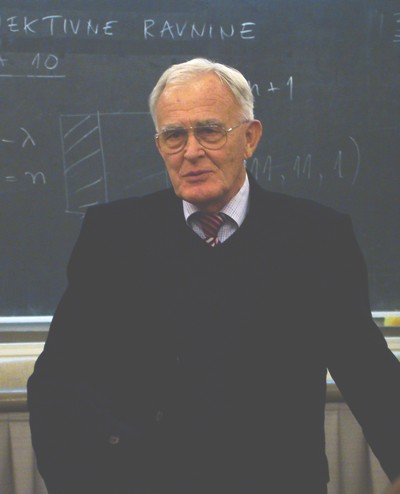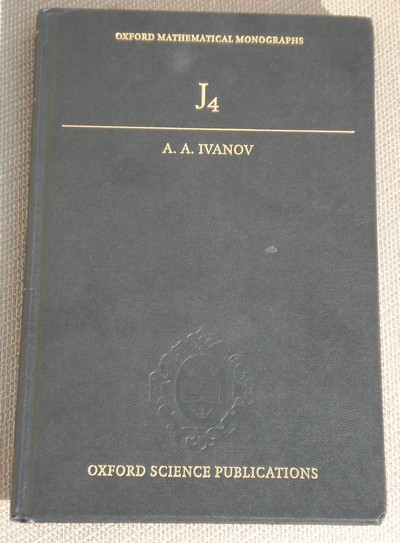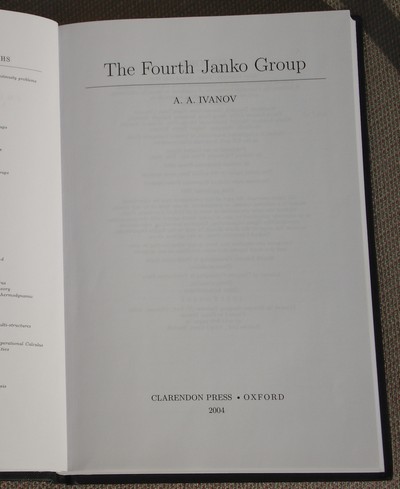 | Israeli mathematician Yakov Berkovitch and Croatian mathematician Zvonimir Janko have published a voluminous joint monograph "Groups of Prime Power Order", part II, comprising 520 pp. Professor Janko is known for the discovery of his famous sporadic groups J1, J2, J3, and J4. The discovery of J1 in 1964 has launched the quest for other sporadic groups. He is one of originators of the theory of p-groups. |



Groups of Prime Power OrderYakov Berkovich, a Russian mathematician now working at the University of Haifa, Israel (address: Department of Mathematics, University of Haifa, Mount Carmel, Haifa 31905, Israel), has a very fruitful collaboration with Croatian mathematician Zvonimir Janko in the past years. He is preparing a monograph entitled "Groups of Prime Power Order", which was originally planned to be issued in 2001. However, Zvonimir Janko has obtained so many substantially new results that Berkovich postponed issuing the book, since otherwise the book would be immedately outdated. Moreover, professor Berkovich claimed in 2001 that some of the results that Janko had recently obtained in this field are the most important in the past 30 years! Meanwhile, the material has grown enormously, and now the monograph is planned to be issued in three parts, starting with 2008. The second and third part will be a joint work of professors Berkovich and Janko. The second part has been published in 2008 in a voluminous hardcover monograph on 520 pp. Although at the age nearly 80 years, professor Janko is still amazingly active as a scientist. Saunders MacLane, distinguished American mathematician, placed Zvonimir Janko among originators of the theory of p-groups. Source www.croatianhistory.net/etf/janko More information about the monograph |
| Croatian readers should be aware of a relatively recent monograph devoted to Janko's Fourth Group J4: A.A. Ivanov: The Forth Janko Group, Oxford Mathematical Monographs, 2004, 250 pp Alexandar Antolievic Ivanov is professor of pure mathematics at Imperial College, London, trained as a mathematician in Moscow, Russia
The title of the book on the front conver is simply J4 :
And the inside title reveals to full title of Ivanov's monograph:
|
| Sensational discovery of The First Janko Group in 1964 To illustrate the "earthquake" in group theory which raised Janko's 1964 discovery of J1 we cite the following testimony from [Ćepulić] (translated from Croatian by D.®.). In 1997, during the celebration of 65th birthday of professor Janko in Mainz, Bertram Huppert, the author and coauthor (with Norman Blackburn) of the most extensive, encyclopaedic treatise and manual on finite groups, Endliche gruppen I, II, III, said roughly the following: "There were a very few things that surprised me in my life. I experienced the Second World War. It could have been predicted that there will be war. I believe it will surprise you, and some of you may be shocked by what I am going to say. There were only the following two events that really surprised me: the discovery of the first Janko group and the fall of the Berlin Wall." Professor Vladimir Ćepulić from the University of Zagreb was a witness of the following interesting event in Göttingen, which nicely illustrates the importance of this discovery. In his investigation professor Janko exploited modular characters of groups, a theory developed in 40s and 50s of the 20th century by Richard Brauer, one of the most famous mathematicians. Professor Richard Brauer, a German emigree to the USA, was a visiting professor in the academic year 1964/65 at the Mathematical Institute in Göttingen, where I also participated as a stipendist of the Humboldt Foundation, and attended his lectures. Professor Brauer arrived to his first lecture after Christmas visibly excited, carring a piece of paper in his hand and saying: "I have received this mail from Zvonimir Janko from Australia, in which he informs me that using my theory of modular characters he found a new sporadic finite simple group!" ([Ćepulić], translated form Croatian by D.®.) The name of Zvonimir Janko has entered twice into the Encyclopaedia Britannica Year Book with extensive presentations of his work written by Irving Kaplansky, a famous algebraist. See [Devidé]. Source www.croatianhistory.net/etf/janko/ |
Orders of all 26 sporadic simple groups, from the David Madore web page:
Source www.croatianhistory.net/etf/janko/ |
Formated for CROWN by prof.dr. Darko ®ubrinić
Distributed by www.Croatia.org . This message is intended for Croatian Associations/Institutions and their Friends in Croatia and in the World. The opinions/articles expressed on this list do not reflect personal opinions of the moderator. If the reader of this message is not the intended recipient, please delete or destroy all copies of this communication and please, let us know!

